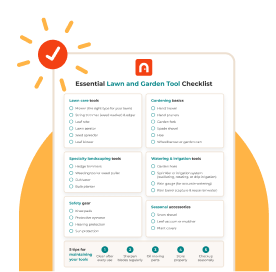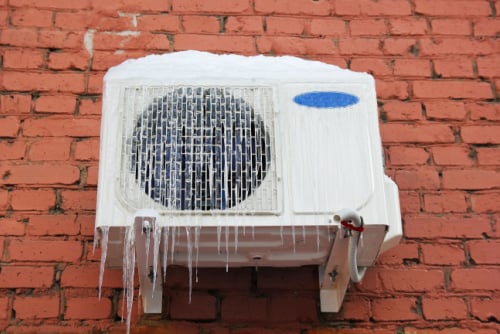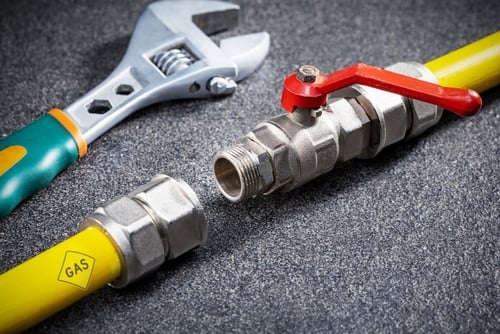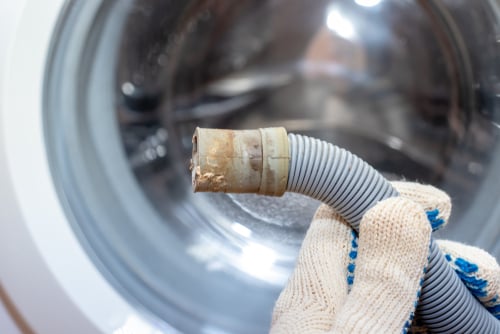The warming weather means it’s time to grab your shears and shovels, embrace the mud, and wake your yard from its winter slumber. We’re here to help with a complete guide to lawn care for spring.
Spring is the season of fresh starts—not just for flowers and grass, but for homeowners looking to revive their outdoor spaces. A little early-season prep goes a long way, keeping your lawn lush, your garden thriving, and your landscaping looking its best from spring to summer, fall, and beyond.
This spring yard care checklist will guide you through every essential step, so you can spend less time troubleshooting later and more time enjoying a yard that’s healthy, vibrant, and ready for backyard lounging, barbecues, and everything in between.
Spring lawn maintenance tasks
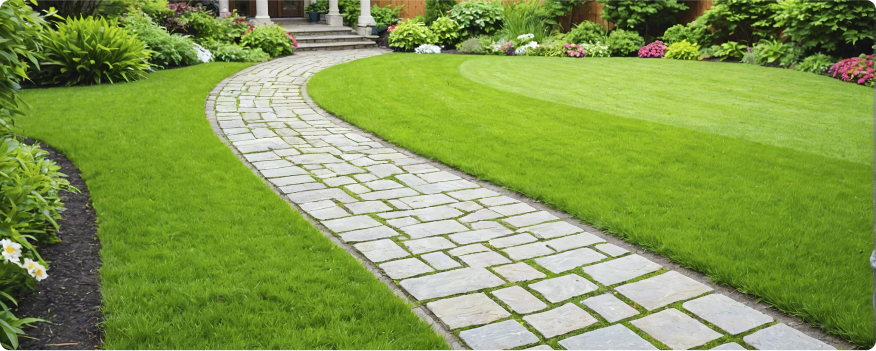
A lush, green lawn is something you have to build from the ground up—literally. Springtime grass care gives the green a fresh start so it can thrive all season long.
-
1
Clean up winter’s mess
Start your springtime grass care by clearing leaves, branches, and debris. Leftover clutter can suffocate your lawn and invite pests. Rake up thatch (the dead grass layer) so new growth gets the sunlight and oxygen it needs.
-
2
Aerate and overseed
If your lawn has compacted soil or patchy spots, aeration can make a big difference. It loosens the ground, allowing water and nutrients to sink in. Don’t forget overseeding as a part of springtime grass care. This practice fills in bald spots and keeps your lawn thick and healthy.
-
3
Apply spring lawn treatments
If your lawn has compacted soil or patchy spots, aeration can make a big difference. It loosens the ground, allowing water and nutrients to sink in. Don’t forget overseeding as a part of springtime grass care. This practice fills in bald spots and keeps your lawn thick and healthy.
-
4
Mower tune-up
A dull mower blade tears your grass instead of cutting it cleanly. Sharpen the blade, change the oil, and make sure everything runs smoothly before that first mow.
Spring garden maintenance tasks
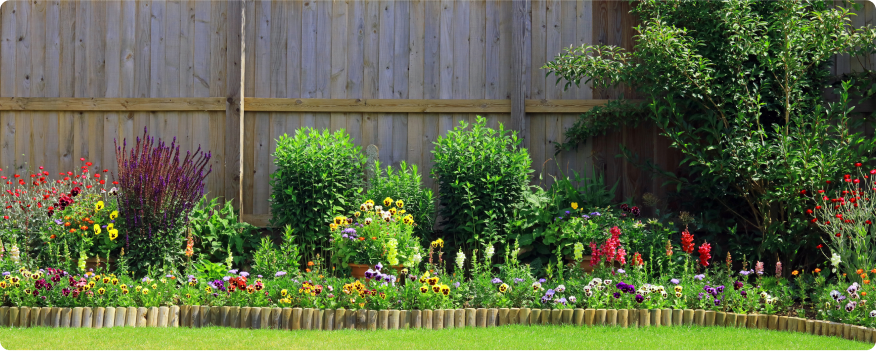
No matter if you have a small balcony setup or a sprawling vegetable garden full of homegrown goodness, spring yard care sets the stage for a thriving growing season.
-
1
Tidy up your beds
Start your gardening process by clearing out dead plants, old mulch, and weeds from your garden beds. A fresh start means healthier plants (and a neater looking garden). If you had any diseased plants last year, avoid composting them. Dispose of them properly to prevent spreading issues into the new season.
-
2
Prep and nourish your soil
Healthy plants start with healthy soil. Test your soil’s pH and add compost or organic matter as needed. Mix in organic matter like compost, aged manure, or peat moss to replenish nutrients and create the ideal growing environment.
-
3
Plan your planting strategy
Spring is planting season, but before you start digging, consider your layout. Pay attention to sun exposure, spacing, and plant pairings. Companion planting—like growing basil near tomatoes or marigolds around veggies—can naturally deter pests and improve growth. If you’re adding perennials, make sure they’re suited to your climate and soil conditions. For annuals, choose a mix of early, mid, and late bloomers for continuous color throughout the season.
-
4
Mulch for moisture and weed control
Mulching is one of the easiest ways to maintain a healthy garden with minimal effort. A fresh layer of mulch (about 2–3 inches) helps retain moisture, suppress weeds, and regulate soil temperature. Organic mulches, like wood chips, straw, or shredded leaves, also break down over time, adding nutrients to the soil. Just be sure to keep mulch a few inches away from plant stems to prevent rot and pests.
-
5
Check your watering system
A deep, consistent watering routine is key to a thriving garden. Inspect your hoses, irrigation lines, or drip systems for leaks and make sure everything’s working before the season heats up.
Spring landscaping tips
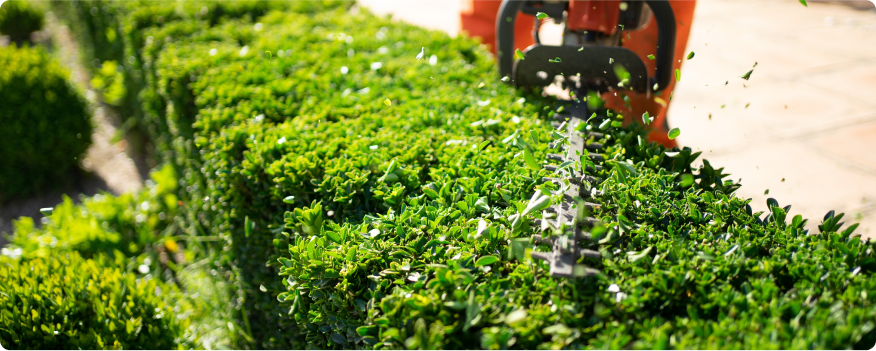
A few smart landscaping updates can take your outdoor space from meh to wow—and set the foundation for a season of easy spring lawn maintenance.
-
1
Prune like a pro
Trim dead or damaged branches from trees and shrubs. For flowering shrubs, research whether the best time to prune is before or after blooming. Proper pruning encourages healthy growth, improves airflow, and prevents plants from becoming too dense or unruly.
-
2
Hardscape check-up
Inspect patios, walkways, fences, and decks for any winter damage. Give patios and decks a good sweep and consider power washing to remove dirt, moss, or mildew buildup and enhance curb appeal. A quick stain or sealant touch-up can also protect wood surfaces from sun and moisture damage.
-
3
Add some green
The best part of lawn care for spring is planting new trees, shrubs, and flowers before summer’s heat kicks in. When selecting plants, opt for native species when possible. If you're adding flowers, consider a mix of perennials and annuals for lasting color and variety.
-
4
Sprinkler system tune-up
If you have an in-ground irrigation system, a seasonal check-up is an essential part of your lawn care for spring. Run each zone and look for broken heads, leaks, or areas with uneven water coverage. Adjust sprinkler angles to avoid watering sidewalks or driveways. Properly functioning sprinklers will save water and keep your lawn and plants evenly hydrated.
Pest and disease prevention
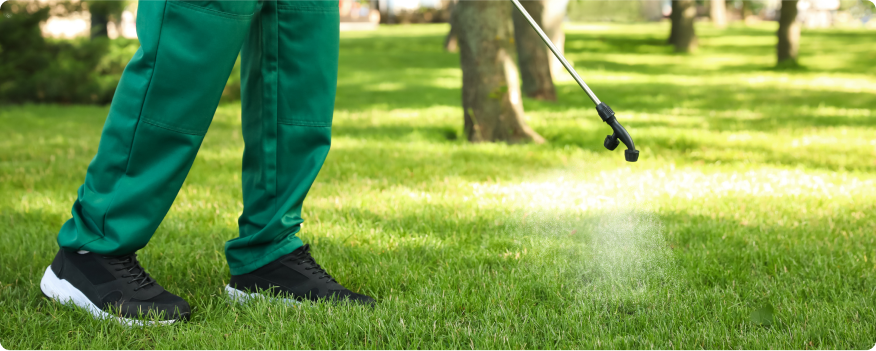
A beautiful yard can quickly turn into a battleground if pests and plant diseases take hold. Your spring lawn care routine is the perfect time to go on the offensive with proactive prevention.
-
1
Inspect for pests
Before pests become a full-blown problem, do a thorough walk-through of your lawn and garden. Look for chewed leaves, discolored spots, wilting plants, or small holes in the soil, which can all be signs of unwanted visitors. Pay close attention to the undersides of leaves, where insects like to hide.
-
2
Apply organic pest controls
Skip the harsh chemicals and go for organic pest control methods that protect your plants and the environment. Sunday Lawncare’s custom pest control products use simple, science-backed ingredients effective against common pests.
-
3
Install or repair barriers
Physical barriers can keep pests out before they even get started. Row covers, netting, and plant collars can protect vulnerable plants from insects and small critters. If deer, rabbits, or larger pests are a concern, inspect and reinforce any fencing around your yard.
Seasonal equipment checkup
Your tools do the heavy lifting all season. That’s why it’s important not to neglect them during your spring lawn maintenance. A little TLC now can make all the difference.
-
1
Inspect lawn and garden tools for wear and tear
A rusty shovel or a dull pair of pruning shears won’t do you any favors. Check all your hand tools for rust, dull edges, or loose handles. A quick scrub with steel wool, a little sharpening, and a coat of oil can bring old tools back to life. If something is beyond repair, now’s the time to replace it so you’re not scrambling later.
-
2
Prep power tools for action
Gas-powered tools like mowers, trimmers, and chainsaws need a quick tune-up before they’re ready to roll. Change the oil, replace air filters, and check spark plugs. For electric tools, inspect cords and batteries for damage. Finally, sharpen lower blades for a smooth cut.
Sustainability tips
Spring lawn maintenance doesn’t have to come at the planet’s expense. These eco-friendly tips help you maintain a beautiful outdoor space while reducing waste and conserving resources:
-
1
Compost winter debris
Don’t toss leaves, grass clippings, and plant trimmings! Collecting them in a simple compost pile or bin reduces waste and provides free, natural fertilizer for your garden.
-
2
Choose native plants
Native plants are naturally suited to your local climate, meaning they require less water, fertilizer, and maintenance. Plus, they support local pollinators and wildlife.
-
3
Install rain barrels for water conservation
A rain barrel connected to a downspout provides free irrigation water that’s naturally soft and chemical-free, cuts down on waste, and saves money.
-
4
Use organic fertilizers and natural pest control
Chemical-heavy fertilizers and pesticides can harm beneficial insects and leach into groundwater. Instead, opt for organic alternatives.
FAQs
You’ve got lingering questions about spring yard care and garden prep, and we’ve got answers. Let’s tackle some of the big ones.
When should I start my spring lawn care?
The best time to start your spring yard care depends on where you live, but a good rule of thumb is to wait until your lawn wakes up from winter dormancy. When soil temperatures reach about 50°F and your grass starts showing signs of growth, it’s go-time.
Do I need to aerate my lawn every spring?
Not necessarily! If your soil is compacted, your lawn has a lot of foot traffic, or you’ve noticed water pooling on the surface, aeration can help. If your lawn is in good shape, aerating every other year should be enough.
Is it better to fertilize or seed first?
If you’re overseeding, do that first! New grass seeds need to establish themselves before fertilizer is applied. If you’re just maintaining a healthy lawn, start with a slow-release fertilizer to give your grass the nutrients it needs to thrive.
How often should I water my lawn in the spring?
Your lawn needs about an inch of water per week, including rainfall. Springtime usually brings enough moisture on its own, but if things are looking dry, give your grass a deep watering in the morning once or twice a week rather than frequent, shallow sprinkles.
Frontdoor is there for your spring lawn care
Need a little extra help with your spring yard care? Download the Frontdoor app today to video chat with an Expert handyperson about your spring lawn care questions. From fence repairs to deck maintenance, our Experts are here to guide you through all your spring projects. Plus, as a Frontdoor member, you’ll save 25% on Sunday Lawn Care fertilization plans to keep your lawn lush and healthy all season long.
Was this article helpful?


